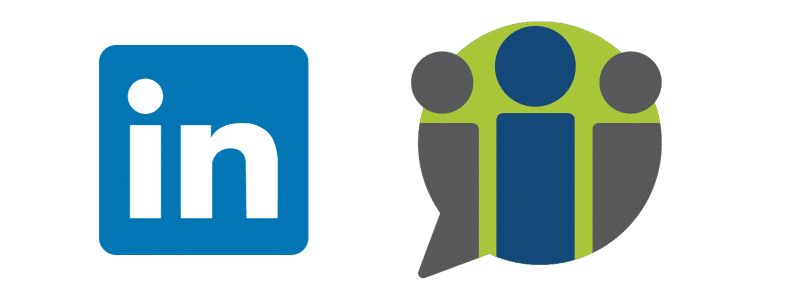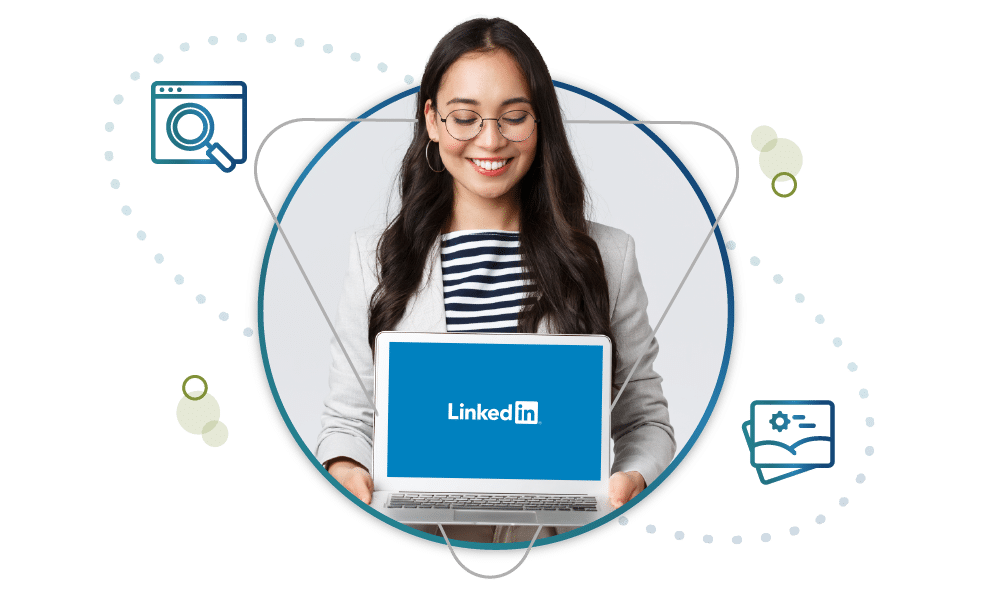In many customer acquisition strategies, LinkedIn ads are powerful tools that often go overlooked by businesses and marketers alike.
LinkedIn is commonly known for being a space to job-hunt, establish an online CV, or network, but some of its best value propositions are advertising to an extremely well-developed demographic of potential clients. This has become especially apparent after LinkedIn came out with Campaign Manager, their internal platform for engagement analysis across campaigns.
If you are not familiar with LinkedIn Ads or haven’t seen the merit to them prior, you are in the right place. We have constructed a handy guide to what types of LinkedIn Ads are available, how to use them for different types of businesses, and best practices to create sharp campaigns for high ROI. Get ready to see how LinkedIn Ads work for customer acquisition in an entirely new light!
In this blog, we’ll look at the following:
- Types of LinkedIn Ads for Customer Acquisition
- The First Steps of Advertising on LinkedIn
- LinkedIn Ads Best Practices
Types of LinkedIn Ads for Customer Acquisition

When learning how to advertise on LinkedIn, you can waste time and money if not well-acquainted with the different LinkedIn ad types and how they can best serve your specific business. Another common misconception is that LinkedIn ads are all business-to-business (B2B); the number of business-to-consumer (B2C) ads is growing at a significant rate in the LinkedIn ad space. Here are some of the most common types of ad campaigns and what they are used for:
Sponsored Content
These are going to be paid LinkedIn posts that are arranged in image, video, or carousel form on your feed. Sponsored ads generate significant feed engagement (as LinkedIn has more targeted user behavior than broader social media such as Facebook), and you can create all sorts of trackable metrics or lead-generation forms using sponsored content.
Direct Sponsored Content
Direct sponsored content (DSC) is different from sponsored content in that your ad is not shown as an organic post on your LinkedIn company page. There are also more targeting options available for this type of ad. This has two advantages – you will be able to narrow your demographics for sharper data, as well as not cluttering up your organic feed.
Text Ads
Similar to Google ads or other pay-per-click campaigns, these text ads will run across the right rail on mobile or the top banner of desktop browsers. They have headlines, tags, and images just like other targeted ads in this format.
Dynamic Ads
Similar to text ads in location, format, and appearance, these are even more effective as you can target specific jobs, follower groups, and content interests. Additionally, dynamic ads can address viewers directly using their profile picture and name. You must be in contact with a LinkedIn representative in order to run dynamic ads, as they require additional information.
Sponsored InMail
A direct-to-inbox ad for members of LinkedIn are some of the highest-converting ads. Though users can opt out of them, those who still receive them open these at higher rates than normal emails as well, creating an extremely profitable funnel if you are targeting your ideal user set.
The First Steps of Advertising on LinkedIn
In this section, we’ll provide you with some basic strategies for starting LinkedIn ads, as well as some pitfalls to avoid. To begin with, you’ll need to have an existing company page; if you haven’t done that, make sure you are up to speed on the best practices there.
Create a Campaign
Inside Campaign Manager, there will be a ‘Create Campaign’ button. You will want to include your campaign name, business type, title reference, region or geo, and a campaign ID to match other channels. You will also need to select the length of time for your campaign to run.
Determine the Ad Objective
Most types of ads will have prompts such as:
- Brand awareness
- Website visits
- User Engagement
- Video views
- Lead generation
- Website Conversion
Thinking about how your business and its ads will interact with a target demographic for an end result will be key in choosing; always feel free to reach out to LinkedIn ads experts for a bit of guidance.
Define Your Audience Targeting Parameters
For most of the generalized ad campaigns, you will want your reach to be 50,000-100,000 members to start. You can adjust up or down based on product batching or exclusivity, and for InMail, the number will often be far less. From there, you should:
- Pick a primary location to target
- Add secondary locations or excluded locations
- Add audience attributes (job sector, education, specific companies, etc.)
- Choose a profile language for your audience
- Enable audience expansion to get comparative ads so you can learn as you go
Following these selections, you should save your campaign as a template in order to replicate or tweak this audience once you have learned more about the ad’s performance. You’ll be able to segment your templates and coordinate them with different audience groupings you create over time, so try to label them as specifically as possible.
Scheduling and Budgeting a LinkedIn Ad
After defining your ad parameters, you need to select the type of ad format, schedule it, and define your budget. The scheduling should be congruent with the product timeline, and the budgeting is going to be either cost-per-click or cost-per-impression, depending on your goals. There are other advanced expenditures (cost-per-send for InMail, for example), but it is less likely you will use those on early campaigns.
When setting your LinkedIn ads budget, there are built-in tools on the platform to suggest a range as well as bid type. We recommend following these until you have a better data set to work with – and even then, it’s likely best to sit in the range. LinkedIn has stated that clients see well over 30 percent better ROI when the bids sit within their suggested ranges.
The last step before setting up your ad creative is to attach any insight tags, pixels, or conversion tracking that you may want to associate with your ad. LinkedIn has some recommendations and resources that can help you if you are unfamiliar with this practice.
Create and Launch your Ad
No fantastic campaign would be complete without the substance of the ad – the creation itself! LinkedIn’s campaign manager is very intuitive to work creatively into, and it will show you live previews as you go. Similarly, you can send yourself test campaigns and fine-tune endlessly to see what different iterations of your LinkedIn campaign will look like before launch.
Once you have reviewed your creative, you will submit your campaign to LinkedIn for approval. This process usually takes a day or so, but depending on your content matter, it might take longer. Once your campaign is approved, it’s time to see how it performs in campaign manager and learn about how LinkedIn ads are providing you the opportunity to reach highly targeted audiences.
LinkedIn Ads Best Practices

No one should expect their first campaign to be perfect – the good news is that this guide and LinkedIn insights should be able to get you a strong baseline to create some profitable ads and compelling campaigns. Once you’ve gotten acclimated to the nuts and bolts of setting up an ad, you can work on sharpening each individual component of the process. Consider these tips as you create new campaigns:
Study Your Audience Settings
Your content and intentions can be perfect in a LinkedIn campaign, but if you are distributing it to the wrong people, it will still fail. You want to make sure that your audience size and budget are congruent with your product type and campaign.
Similarly, you can look at LinkedIn member demographics to see which overlapping attributes yield the most clicks and conversions. Things like geography will always play a significant role, and then you can pair that demographic information with information like skills, industries, or groups.
Keep Content Short But Sweet
Even on a business-oriented social media platform such as LinkedIn, attention spans are going to be minimal. Thus, you need to have a good hook and be able to get your point across in a relatively short amount of time. Each different ad type will have suggested lengths or times on LinkedIn Campaign Manager, and industry standards change often based on algorithm and device settings.
Highlight Tangible Pros of your Product
Internet marketing is extremely saturated at this point in time; clients and customers are used to being reeled in by now. In turn, highlighting compelling statistics or quotes from current customers will go a long way to compel the type of demographics that will produce positive ROI over the life of a campaign.
Create Clear CTA’s
This is one of the keys to having proper clicks and conversions – letting your customers know what they’re supposed to do. If someone sees your ad and there is no clear next step, it is human nature to move on. Thus, we recommend using strong verbs in your call to action, such as ‘register,’ ‘join,’ ‘download,’ or whatever is explicitly pertinent to your product. This is another area where you can greatly benefit from referencing existing ad sets and back-testing these CTA’s.
Keep the Human Element
Personalization and familiar language go a long way to differentiating your campaigns from generic ones. Addressing your audience directly based on their demographic settings or interests, or even adding a personalized intro, goes a long way to keeping an audience interested. Using ‘you’ or their job title alongside some compelling CTA’s will pique most audience’s interest.
Most of all, conceptualize who is on the other end of your ad campaigns, test each component, back-test those results, and keep an open mind. The greatest part about targeted ads is they deliver concrete evidence about performance, so you can learn what is working and what isn’t objectively. If you are able to harness this tool, your business could see significant growth using it.
Reach Your Goals in Less Time
Here at Striventa, we understand that becoming a master of LinkedIn ads might not be immediately easy for you or your team. After all, your main focus should be on your business, its products, and your customers. With so many different types of marketing channels, it’s a full-time job to be proficient at even just one of them.
That’s why we created our Business Growth Program. We’ll work with your team to develop a strong foundation of your brand and your ideal customer personas and then employ tactics to attract, engage, and delight your customers. All of this has one singular goal – customer acquisition.

